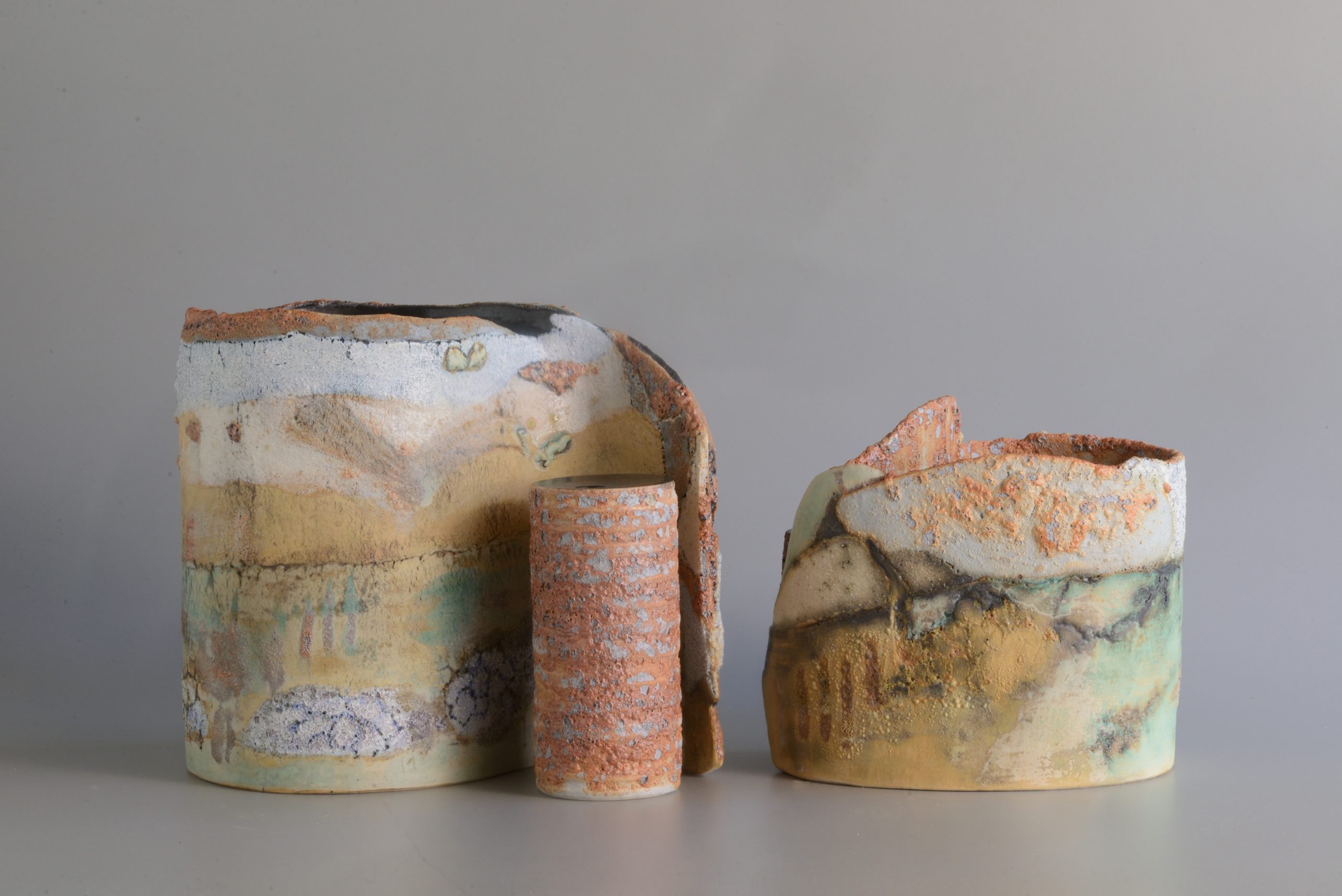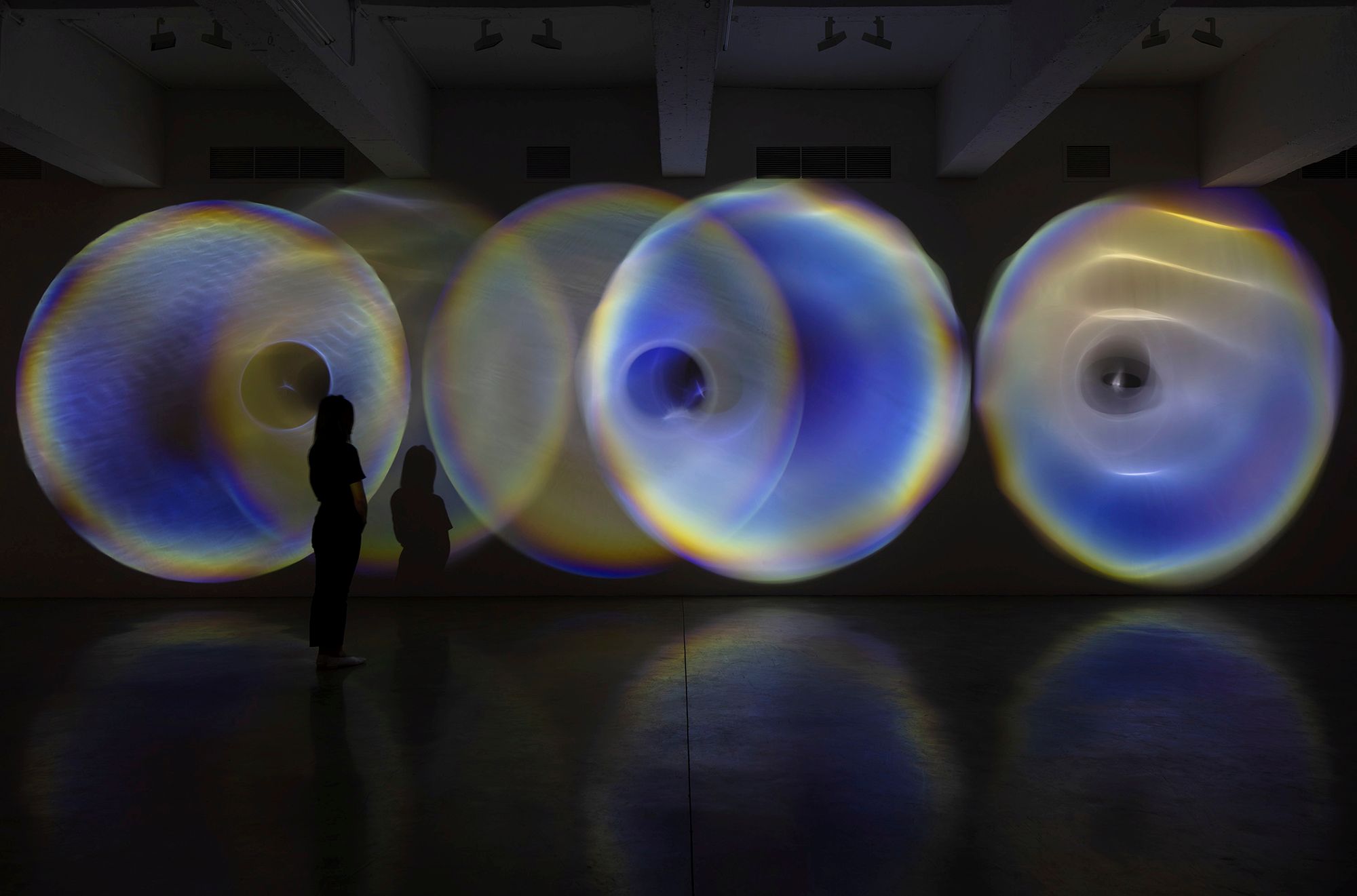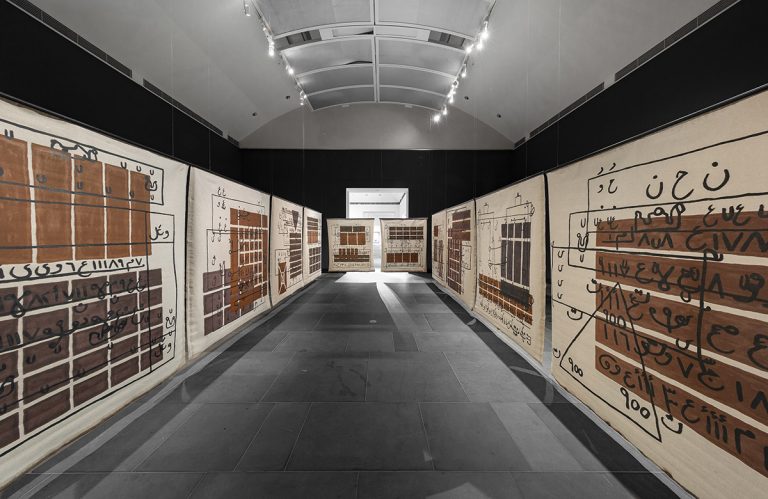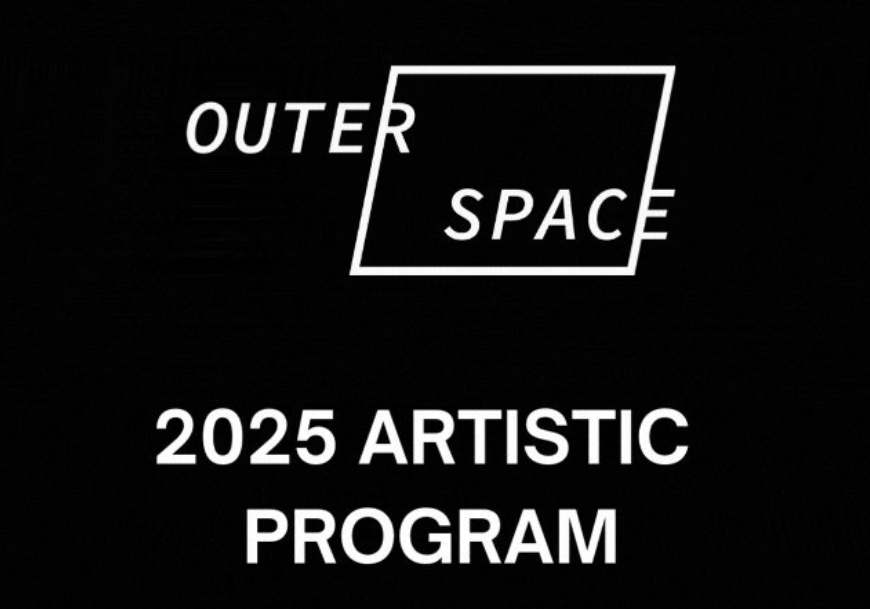
Shatrick, the creative duo comprised of artists Shannon Tonkin and Patrick Zaia, briefly returned from Melbourne to their hometown of Brisbane for a series of performances at Metro Arts in mid-June. Their appearances were part of The View from Here: A Small Perspective on Big Ideas, a four day contemporary art event which inhabited the entirety of Metro’s Edward Street building.
To see the duo’s installation and performance it is necessary to walk down Metro’s innocuous concrete driveway. At the rear of the building The Garden of Shatrick is a disruptive eruption of pink and green against a typical urban backdrop.
The physical work is constructed using two repurposed outdoor shower tents which are bathed in a pink light placed above them. The tents are adorned with green, handmade leaves constructed from various fabrics and synthetic materials. The wire mesh that the leaves hang off is visible, as are the safety pins which keep in place The Garden’s various components.
The layer of exterior foliage, and even the whole work, can be said to be organic (within the confines of visual art). The Garden explicitly presents itself as the product of human hands, and embodies a craft aesthetic while rejecting any desire to be simply artificial (unlike its surrounding urban environment). It appears naturally handmade and organically imperfect.
To enter the confined space of The Garden, you crouch down and walk through a strip of vertical red and white streamers. Shatrick are immediately to your left. Tonkin and Zaia are facing each other, parallel to the door. Naked, they are blindfolded by a loosely cut, pink fabric. Shatrick are engaged in a perpetual kiss which is unbroken for the duration of the performance. Their lips never break; their hands are always joined by their sides. They continuously produce a synchronised humming noise, a rhythmic bodily chant. There is an element of immense physical endurance to the work.
The viewer appraises Shatrick (the living, real, actual entity of two performers made one) as a component of the aesthetic make-up of The Garden: their pubic hair, jewellery, bodies, breathing, and chanting are part of the artwork itself.
There are eight clear cellophane wombs with small red papier mache foetuses inside them scattered throughout the tent. Behind Shatrick, one emerges from a vaguely vaginal form. Other seemingly organic forms, painted in red and white, are pinned to the interior walls. The work’s organic content is again echoed by its organic, handmade forms.
The work acts as a sanctuary, a visually divergent and relatively natural garden which ensconces and shields someone from the urban, outside world. In entering The Garden the viewer enters Shatrick’s refuge and subsumes themselves to the environment and workings of the art piece. Tonkin and Zaia are not visible within the work as two separate performers, as they would be outside the work. It is precisely the garden of Shatrick, and the two artists disappear within the form of this being.
At first, then, the work appears to be about connection: two people are joined authentically and totally by the romantic gesture of the kiss and become a singular entity. But, the idea of connection only surfaces if Shatrick is split into Shannon and Patrick. The being of Shatrick does not pinpoint a moment of connection, because Shatrick always was a singular being within the interior logic of The Garden.
Connection hence moves beyond the representation of a link between two subjects. The Garden represents one subject as a seamless connection that cannot be pinpointed. Although two human figures are here visible, their notional existence is as a conceptual whole at all times. Within the work, there was always only Shatrick, but it remains that the viewer sees the two performers at the same time. The idea of Shatrick replaces the physical reality which defines Tonkin and Zaia as two separate performers.
Connection is no longer based on the joining of two things but rather on the way that two separate things invisibly exist as a whole. It is not only that an individual is seen as a multiplicity. Both Tonkin and Zaia are visible, but each relates to the other within the same whole of Shatrick. Something external (the other performer) enters each performer’s subjective space at all times, even if both artists can be neatly demarcated. Therefore, subjective space disappears and is replaced by its very connection with what is external to it. The material individual is replaced by their conceptual connection with the world.
And here the foundation of this engagement, of this subject-as-connection, is one of blind devotion. Blindfolded, Zaia and Tokin do not gaze at each other, but are conjoined by their perpetual kiss, linked hands, and the rhythmic chant they produce. The blind gaze is hence one of the key tenets of the work, as it similarly describes the way that the conceptual link between the performers, that which makes them Shatrick, cannot be seen. Tonkin and Zaia remain visible as two physically separate beings, yet they are simultaneously and invisibly conjoined as Shatrick.
Inversely, the cellophane wombs allow the previously blind foetuses, nestled as they ordinarily would be within the darkness of the natural womb, to watch over the performance. As the forms which can gaze at the action unfolding, the viewer hence has something in common with these foetal forms.
Yet, if Shatrick is to be considered truly a part of the artwork, to be considered as an image within the larger image of The Garden, then the gaze of the foetuses is the gaze of Shatrick. Both Shatrick and the foetuses are part of one and the same work, and this means their separate gazes are conjoined as one aesthetic whole within The Garden. The work looks at itself at all times. Shatrick watches over the viewer and watches over their own self through the medium of the foetuses. Hence, The Garden of Shatrick gazes at itself, devotes itself to itself. Shatrick is never truly blind, as the medium of the foetuses instigates a voyeuristic relationship with the viewer and the aesthetic environment.
The authenticity of The Garden then arises not in its devotional qualities, but in its blindness to its own existence within the greater whole which the viewer represents. The work gazes inwardly at itself, and this is reflected in the way it is aesthetically divergent to the pre-fabricated urbanity of its surrounding environment.
But, this inward gazing and establishing of difference is precisely what links The Garden to the world because it is what links The Garden’s components with each other. Shatrick blindly devotes themselves to themselves while diverging from their surrounding environment within their garden. Yet, Shatrick is blindly connected to the environment of the artwork through the interconnected aesthetic of the foetuses which watch over them. Shatrick’s subjective interior and composition as an individual remains contingent on a connection, whether it be blind or invisible, with an outside world that gazes back.
Written by Simon Brigden
Review for the exhibition ‘The Garden of Shatrick’. Metro Arts, Brisbane. 7th-10th June, 2017.
Image: Shatrick: The Garden of Shatrick. Photo Credit: Darren Thomas, PhotoCo.









